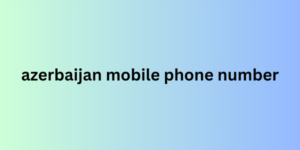A time-tested strategy that works without fail is to demonstrate scarcity, offer users valuable resources/assets, and create a sense of urgency in them.
DueDill offers users instant azerbaijan mobile phone number access to free market intelligence in exchange for their email address:
Source: Because Dill
In terms of creating urgency, Moz does this brilliantly by adding a ‘moment’ to the CTA button to encourage users to take action now , and get additional benefits:

Source: Content Driven
The end goal is to offer valuable content to users, from blog posts and webinars to eBooks and guides, for free, so that they can’t turn down the offer and are forced to engage with your site enough. You can take it a step further by creating a sense of urgency and adding conditions like sign up now, start your free trial, activate today, etc.
6. Aim for a familiar browsing experience
Whether you call it the path of least resistance or the law of past experience, the philosophy is this: Our past experiences influence our interpretation of our present experiences. In other words, distracting from familiar experiences can have a negative effect on a user’s attention span.
For example, people generally perceive information from top to bottom, so it makes sense and looks good to design your website accordingly. People also perceive information from left to right, so brands should adhere to these accepted design principles and create well-organized and well-laid out websites.
You can also use the serial position effect when thinking about how to place important information on a website’s homepage. According to this theory, “people tend to remember the first and last items in a series best, and the items in the middle worst.”
Simply put, prioritize the information you consider important at the beginning and end of your homepage to ensure better understanding and retention of the information.
Ultimately, as long as you offer users a familiar browsing experience with recommendations, your conversion rates won’t suffer.
